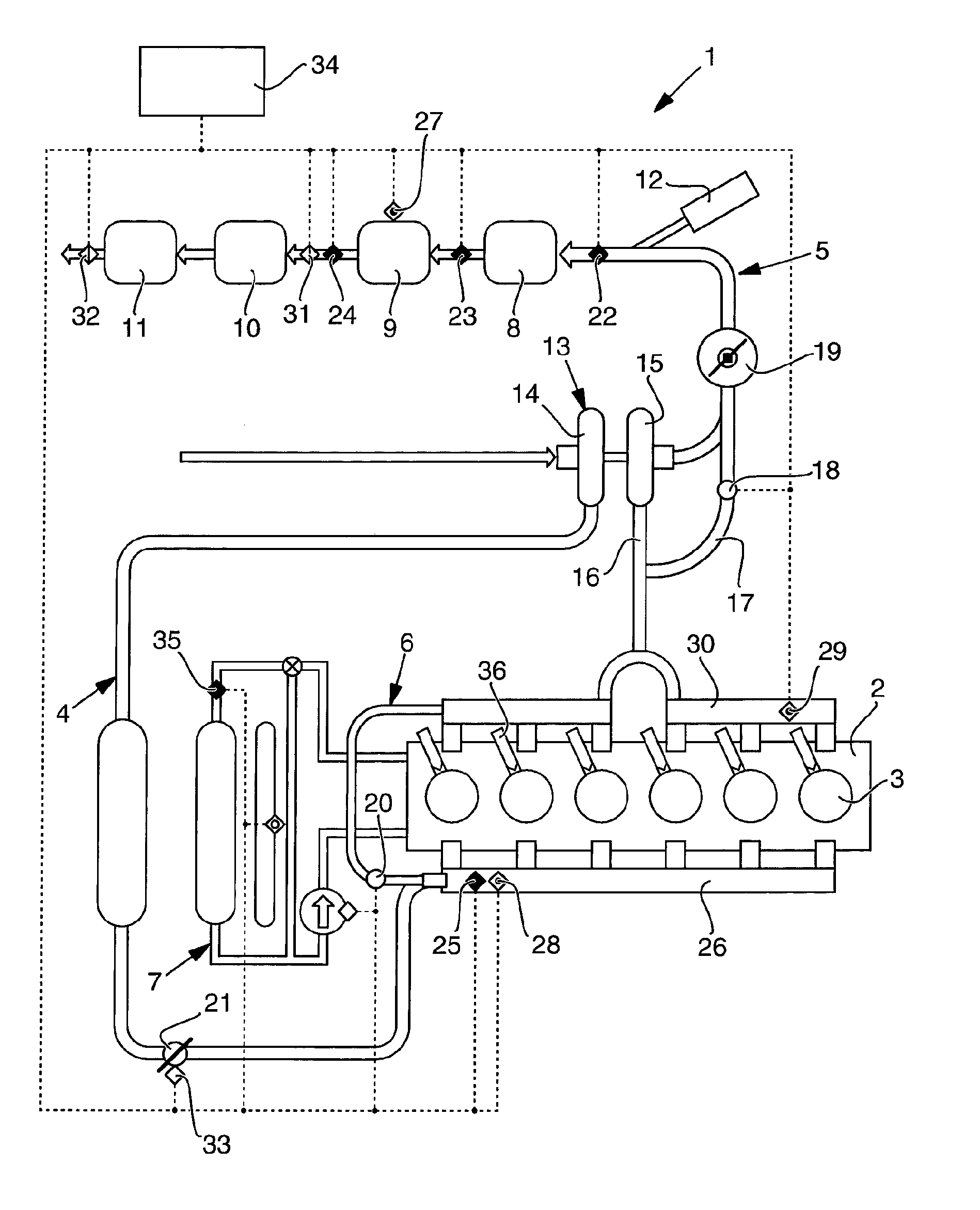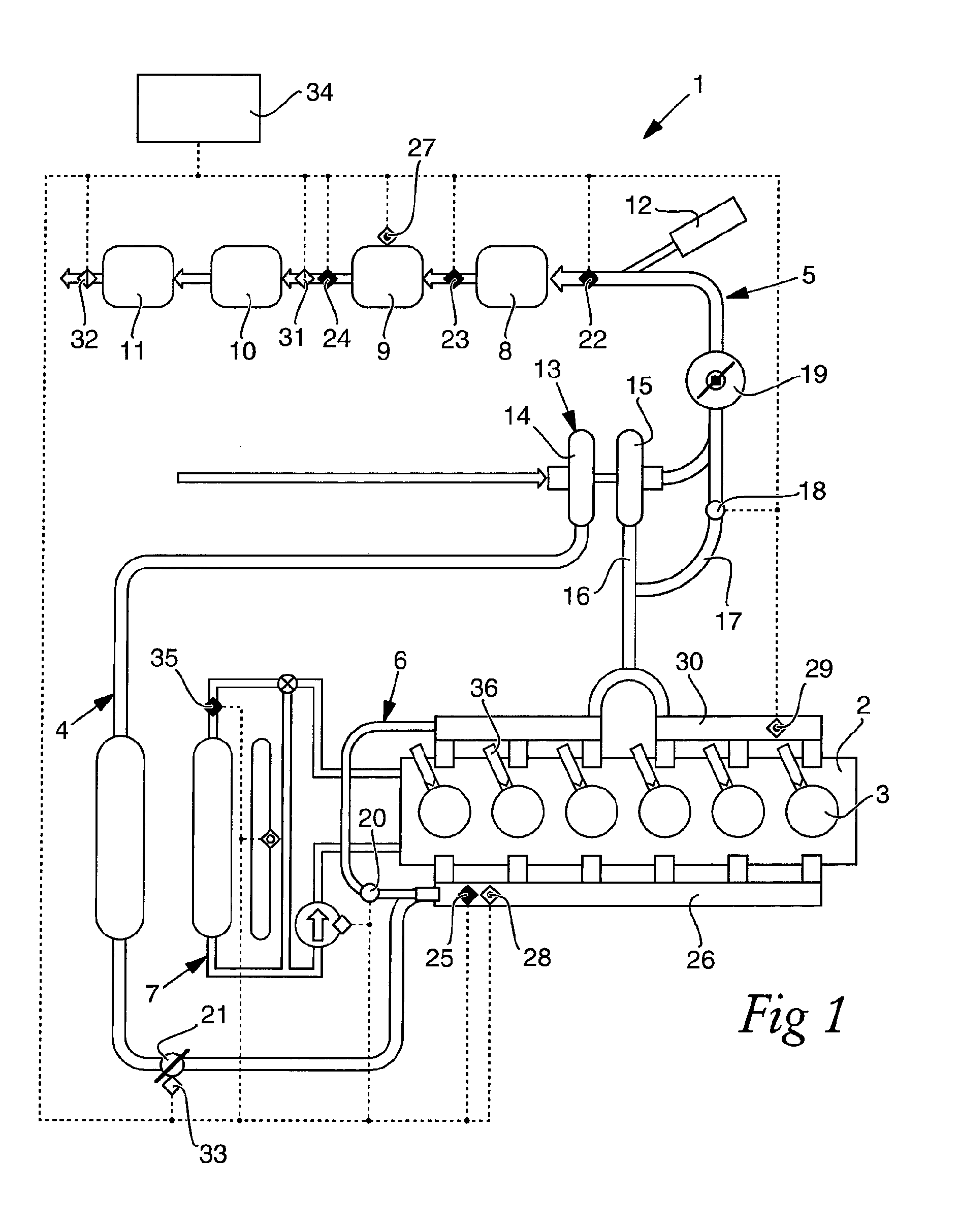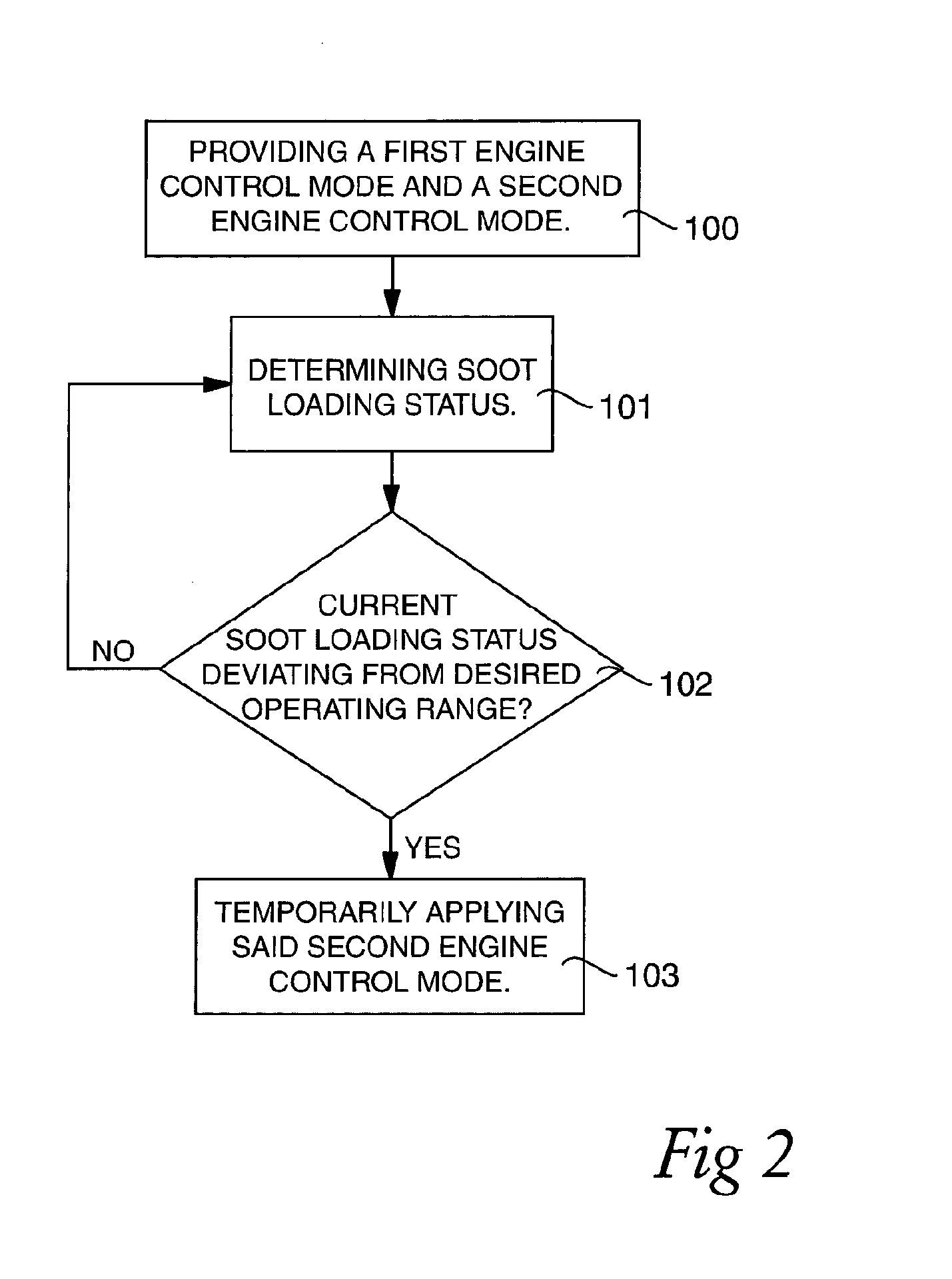Method of conditioning a particle filter
a filter and particle technology, applied in the field of particle filter conditioning, can solve the problems of inability to maintain stable thermally, and low melting point of cordierite substrate, so as to reduce air-to-fuel ratio (afr), increase fuel consumption, and reduce the area of the exhaust system
- Summary
- Abstract
- Description
- Claims
- Application Information
AI Technical Summary
Benefits of technology
Problems solved by technology
Method used
Image
Examples
Embodiment Construction
[0061]FIG. 1 shows a diesel internal combustion engine system 1. The engine is a plural cylinder engine, with its cylinders arranged in a motor block 2, wherein which each cylinder defines a combustion chamber indicated with 3. Connected to an inlet side of the combustion chambers 3 is an air inlet system 4. Connected to an outlet side of the combustion chambers 3 is an exhaust gas system 5. All exhaust gas recirculation (EGR) circuit 6 forms a branch from the exhaust gas system 5 and is connected to the air inlet system 4 in a way known per se. A cooling system 7 is connected to the motor block 2 for the cooling thereof in a way known per se.
[0062]In the exhaust gas system there is provided in series and in the following order, as seen in the gas flow direction from the combustion chamber, a Diesel Oxygen Catalyst (DOC) 8, a Diesel Particle Filter (DPI:), 9, a Selective Catalytic Reduction (SCR) unit 10, and a Clean Up Catalyst 11 which removes ammonia from the gas. The DPF 9 is a ...
PUM
 Login to View More
Login to View More Abstract
Description
Claims
Application Information
 Login to View More
Login to View More - R&D
- Intellectual Property
- Life Sciences
- Materials
- Tech Scout
- Unparalleled Data Quality
- Higher Quality Content
- 60% Fewer Hallucinations
Browse by: Latest US Patents, China's latest patents, Technical Efficacy Thesaurus, Application Domain, Technology Topic, Popular Technical Reports.
© 2025 PatSnap. All rights reserved.Legal|Privacy policy|Modern Slavery Act Transparency Statement|Sitemap|About US| Contact US: help@patsnap.com



